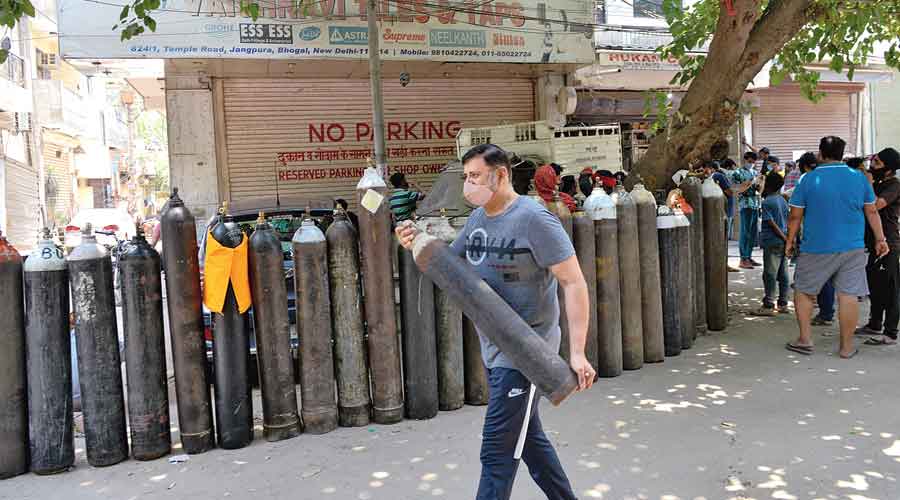A task force constituted at the Supreme Court’s behest has recommended “compulsory” oxygen plants in every hospital in the country and efforts to turn every big city self-sufficient in oxygen by enhancing local manufacture and storage.
The apex court had on May 5 directed the formation of the National Task Force (NTF) — with experts and bureaucrats — amid a severe oxygen shortage that was claiming hundreds of lives every day during the second wave of Covid.
Its mandate was to audit the oxygen demand, manufacturing capacity and system of supply and recommend ways of avoiding future shortages even during crises.
A report submitted by the task force on June 22, which was made public on Friday, has made several recommendations such as the establishment of a crisis “war room”. The matter is expected to be heard in the first week of July.
The task force, headed by the cabinet secretary, has lavished praise on the Centre whose handling of the Covid emergency has evoked condemnation at home and abroad.
Some of the recommendations in the task force’s 38-page report, submitted through Nipun Vinayak, joint secretary in the ministry of health and family welfare, are:
⚫ Make oxygen pressure swing adsorption (PSA) plants — which separate oxygen from compressed air — compulsory at every hospital. All district hospitals should have PSA plants with compressors so they can manage their own demand and also fill cylinders for the health centres and ambulances.
⚫ Each hospital with 100 or more beds should be encouraged to have a liquid medical oxygen (LMO) storage tank. A cryogenic LMO storage tank should be insisted on at every hospital in a metropolitan area.
⚫ There should be a strategy to manufacture oxygen locally or in the neighbourhood for big cities to meet at least half their LMO demand. This may be taken up in Delhi and Mumbai on priority because of their population densities.
⚫ All 18 metros must be made self-sufficient in oxygen, with at least 100 tonnes’ storage within the city itself.
⚫ There should be a buffer of at least six oxygen cylinders at each rural health centre to offset supply delays and infection surges.
⚫ Facilities with oxygen concentrators must have a backup power plan, or enough oxygen cylinders for safe transport of patients elsewhere in case of a power cut.
⚫ Non-rebreather masks and non-invasive ventilation should be preferred over high-flow nasal oxygen, Bain circuits or indigenous CPAP machines to optimise oxygen use.
⚫ Once oxygen tankers are allocated to a state, the state should manage the filling and distribution of oxygen to urban and rural areas.
⚫ In a shifting pandemic, some of the states need to shed their allocations as new allocations are made to other states. It must be ensured that the states do not continue to request supplies greater than their need.
⚫ During a pandemic, the war room should monitor the movement of oxygen tankers and manage the oxygen demand, consumption and distribution in real time and in a transparent manner.
Praise for government
The report lauded the Centre’s “hard work and efforts” in the management of the pandemic. “The members of the NTF appreciate that many of their recommendations were already under implementation and work on others has also already commenced,” it said.
It added that the production of liquid oxygen in the country had been increased by about 3,000 tonnes in April, and that the average daily production jumped from 5,700 tonnes in August last year to 9,690 tonnes on May 13 this year.
“The NTF recognised the enormity of the challenge and appreciated the steps taken by the Government of India,” the report said.
It said that despite the enhanced daily production of LMO, there were challenges in allocations to the states because oxygen production was concentrated in a few states, mostly in eastern India.
The report said that during the beginning of the second wave, there was simultaneous demand from the high-burden states that were mostly concentrated in western, northern and central India. Not all of them manufactured LMO.
“This was followed by increased demand in southern states of Karnataka, Kerala, Tamil Nadu, Andhra Pradesh without appreciable decrease in allocations of other major states,” the report said.
It highlighted that the air force and railways had been enlisted in the transport of cryogenic oxygen tankers.











